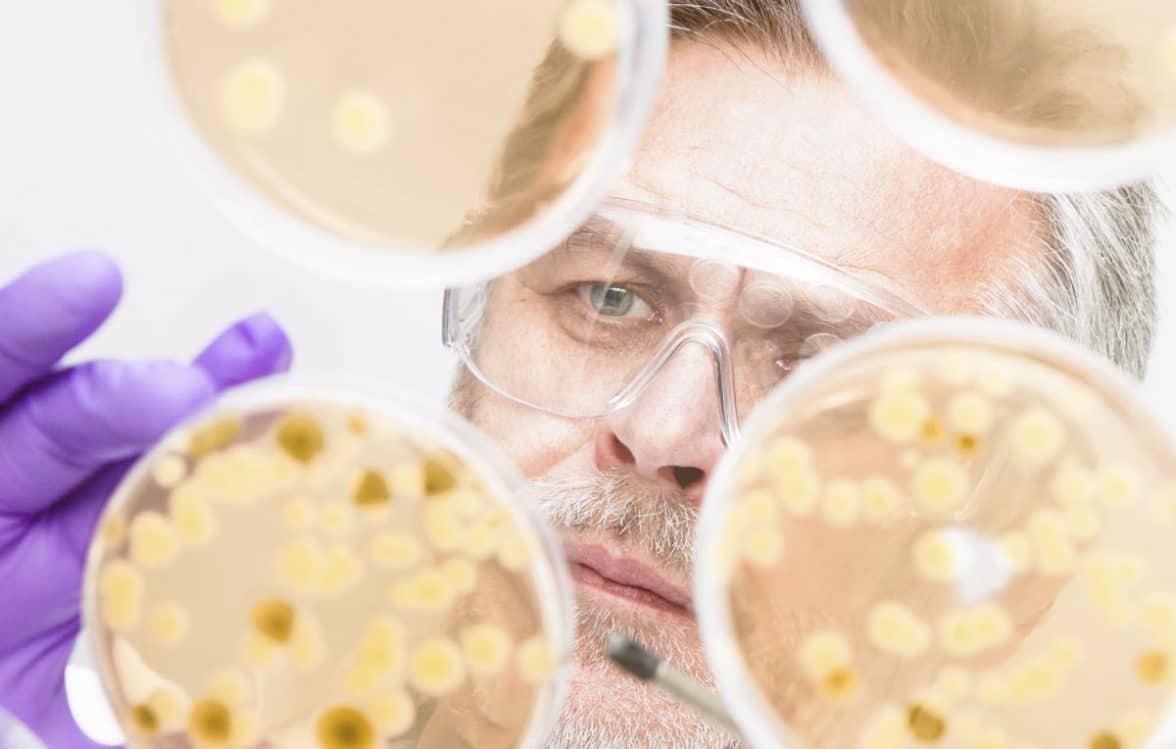The selection of bio-based crop protection products continues to grow, providing more options to farmers.
The aim of basically any seed treatment is to increase seed performance. This can be done by destroying seed-borne pathogens, protecting the seed from soil-borne pathogens, optimising the handling of the seeds and accuracy of planting, and improving the rate of germination.
Due to the specific nature of seed, which can be relatively small or irregularly shaped, or because of the intended production regime, certain crops are better candidates for the application of seed treatments. An example is lettuce — pelleted seed is useful in head lettuce production because of the need for precision seeding, but is less advantageous for the dense sowings of loose-leaf lettuce in bed production.
WHICH IS WHAT?
In conventional production, seed is often treated with chemical seed enhancements. However, nowadays many alternatives to the chemical approach can be found in either organic and/or biological seed treatments. Before entering into the details, it should be said that two terms are the source of regular confusion within the seed treatment sector. In certain cases, the terms organic and biological seed treatment are used interchangeably and no clear definition is yet available. In this article, European Seed is specifically looking at biological seed treatments.
In general, everything can be classified into two categories within the biological sphere — biopesticides and biostimulants. Biopesticides are considered to be a crop protectant, while biostimulants are considered to be a yield enhancer or growth promotant. Both biopesticides and biostimulants are comprised of naturally-derived organisms and compounds or substances and can be seed-applied. The difference is that some formulations or applications are comprised of living organisms and these are known as microbials. The products that are not formulated with living organisms, but are naturally-derived, are known as biochemicals. Biological seed treatment is the technology whereby seeds are treated or covered with a combination of selected biochemicals and/or microbials. Colin Bletsky, vice-president of BioAg at Novozymes states that such products are typically applied to the surface of the seed and are derived from or contain natural materials.
“Ag biological products on the market today include inoculants and nutrients as well as biopesticides, such as insecticides, fungicides, nematicides and herbicides that can complement or replace agricultural chemical products,” says Bletsky. “Examples of ag biological products include Bt sprays, microbials and naturally-derived chemicals. Ag biologicals can help increase yields in a variety of sustainable ways by improving nutrient uptake, promoting growth and protecting plants from insects, weeds and diseases.”
Organic seed treatment, on the other hand, is often understood to be a subgroup of seed treatments, which can be applied in organic agriculture. An organic seed treatment does not necessarily have to be biological, because some chemicals are allowed in organic agriculture. Most chemical seed protectants are not an option for organic growers, however, there are some seed treatments, such as priming, pelletising, and the use of hot water or protectants that are compliant with the National Organic Program (NOP), which can be used by organic farmers to improve seed performance. There is a slight difference in terms of regulations in the sense that organic seed treatment implicates that any inputs such as micro organisms, fertilizers etc., must be authorised for organic farming. Biological seed treatments can be used by organic farmers if the treatment is certified organic.
MICROBES
Microbes are tiny single-cell organisms of which millions can fit into the eye of a needle. These organisms occur naturally in the environment and are found almost everywhere. Countless microorganisms live in the soil and in close relation to the plant (i.e. microbiome) and interact with plants and soil during the growing season in several ways. Many of these microorganisms have distinctive properties that can help control fungi, bacteria, nematodes, insects and weeds. These microorganisms can also stimulate plant growth and yield by improving access to nutrients. Microbial products are made from microbes that can work alone or complement traditional methods of plant production and protection. Bletsky adds that the BioAg Alliance, which is Novozymes’ strategic alliance with Monsanto, focuses on microbial inoculants and biopesticides.
Microbial products, notably those products that contain bacteria and fungi, can promote soil health by protecting crops from pests and diseases and enhancing plant productivity and fertility. Microbial products’ common modes of delivery include seed treatments, direct soil applications, foliar sprays and drench applications.
Microbes have been used in agriculture for a long time. During the past century, farmers have used soil bacteria such as rhizobia and Bacillus thuringiensis (or Bt) strains. Organic farming in particular has benefited, as rhizobia replaces or complements traditional fertilizers and Bt is one of the pesticides permitted in organic production by the NOP. These microbes can easily be cultured by fermentation.
Philippe Cognet of Italpollina indicates that his company is working on commercial formulations combining mycorrhizae species (Glomus mosseae and Glomus intraradices), fungus species Trichoderma atroviride and plant growth promoting rhizobacteria (PGPR). Trichoderma is known to stimulate growth, help the plant to protect itself from various aggressors, and it also provides substances to enhance root development. Mycorrhiza strains create symbiotic associations with roots, helping the roots to uptake water and nutritional elements (e.g. phosphorus) from the soil. “Such symbiotic processes significantly increase the root dispersal zone and are an essential element in the life of plants,” says Cognet.
Peter Maes, corporate marketing director at Koppert Biological Systems, states that specifically for large arable crops cultivated in rows, such as soybeans, rice, maize and grains, Koppert has developed the seed-treatment Panoramix product line. He says this product line contains a number of unique and high-quality microorganisms that benefit the crop.
“Panoramix protects the seeds, promotes early growth and strengthens the seedling, the root system, and the full-grown crop. The product promotes the crop’s growth and makes the plant less vulnerable to pathogens found in the soil and on the seed, including harmful nematodes. A treatment with Panoramix gives rise to a stronger and healthier crop, which is more resistant to drought and disease and – most importantly – much more productive,” says Maes.
These biological seed treatments usually replace or supplement conventional (chemical) crop protection products and fertilisers, and just like in chemical seed treatments, the seed is soaked, covered, coated or inoculated with substances, which have an impact on the plant or its micro-environment in later stages.
Some of the products work as pest and disease control or suppression, while other products increase the yield potential or reduce the need for fertiliser and water input, resulting in plant growth promotion.
“Among the active ingredients in biological seed treatments are microbes like fungi, bacteria, viruses or plant and algae extracts. In general, this technology facilitates very specific inter-species relationships.
“In terms of geography, there are different levels of market penetration in the various regions, with Europe being the second-largest market for biological seed treatment,” Maes adds. “Also, regions have different main product classes, depending on the crops that are grown in the region. One example is in those areas where a lot of soybeans are grown. Farmers use a lot of products with nitrogen-fixing rhizobia.”
Both types of seed treatment are part of a much larger biopesticides market. The global biopesticides market in 2013 was just slightly more than US$1.9 billion and is expected to exceed US$3 billion by 2016.
BENEFITS AND CHALLENGES
For growers, there are several benefits to the use of biological seed treatment. The application of biological seed treatment can reduce the need for nitrogen, phosphorus and water, which are all facing shortages in many regions of the world, making this type of treatment highly attractive for farmers. At the same time, there is a reduction in the health risks for farmers and applicators. There is also the added benefit of no need for resistance management of the pathogen. For a seed company, this type of seed treatment offers the benefit that it provides access to the organic agriculture market.
Several changes would be needed to increase the use of biological seed treatment. For one, it would be good to implement a special registration process for biological products in a low risk class. In addition, the establishment of quality standards would create trust in the efficacy of biologicals among growers. In general, there is a need for more understanding of the crop-specific, inter-species interactions among farmers. Lastly, the development of a more sophisticated seed treatment infrastructure and the improvement of planting windows of biological products would enhance the distribution of these technologies.
OPPORTUNITIES
There are different estimates circulating about how big the market for biological seed treatment actually is, ranging from US$260 million to US$304 million in 2015. Although it is relatively early to say what the market will look like in the years to come, companies agree that there are interesting business opportunities in the field of biological seed treatments because the technology is highly economical, ecological and offers opportunities in terms of public health. The fact that biological actives need high precision of delivery to the plant for optimal efficacy also offers opportunities of growth for certain companies. At the same time, it has been discovered that biological products have shown high efficacy under unfavourable growing conditions, which are often the prevailing conditions in developing countries.
While ag biologicals have been used in agriculture for many years, the product offerings have been limited to only a few organisms. Only recently have the R&D tools and cost of those tools made it possible to more effectively screen and evaluate the vast diversity of microbes present in soil to obtain a much better understanding of the interaction between plants and microbes and of the potential to improve and protect yields in plants.
“With the advances in R&D, reduced costs as well as the advancement in producing microbials on an industrial scale, the BioAg Alliance believes it is now possible to bring substantial new microbial-based innovation to the ag industry,” underlines Blestky.
There are several drivers for companies to invest in biological seed treatment. According to Maes, at the moment the biological seed treatment market is the fastest growing market in agricultural inputs. “This type of biological seed treatment is even more interesting because of the increasing legislative constraints against chemical products (especially in Europe) and the orientation toward environmental protection in many key agricultural economies.”
The technology also offers another tool toward increased yield potential to pave the way to meet the rising demands for agricultural produce in the decades to come. At the same time, there are minimal health hazards for growers and applicators as there may be in chemical products. Also among consumers, there is a new orientation towards a more ‘natural’ mode of production and organic farming.
That there are certainly business opportunities in this sector is underlined by the fact that the BioAg Alliance is testing microbial strains on an unprecedented scale. In 2014, the Alliance tested hundreds of microbial strains in 170,000 field plots across 70 U.S. locations. In 2015, the Alliance plans to more than double that number of field plots in the U.S.
“When considering the food security challenges, the need for more efficient agronomic practices, more sustainable agriculture resource management, reduction of the environmental impact, then it is clear that these factors will drive the growers to keep looking for innovative biological seed treatments that improve performance and value,” says Cognet.












